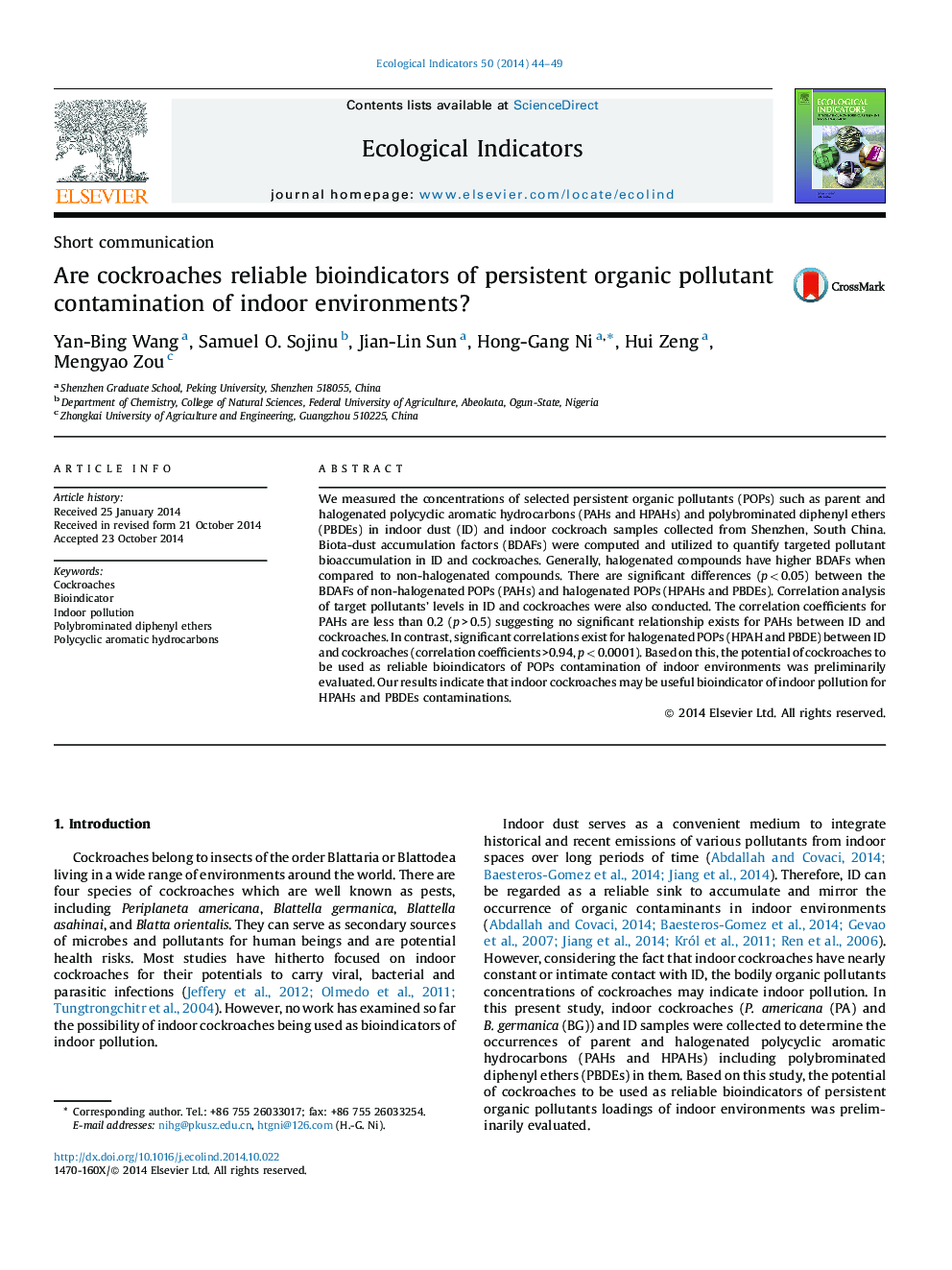| Article ID | Journal | Published Year | Pages | File Type |
|---|---|---|---|---|
| 6294749 | Ecological Indicators | 2015 | 6 Pages |
Abstract
We measured the concentrations of selected persistent organic pollutants (POPs) such as parent and halogenated polycyclic aromatic hydrocarbons (PAHs and HPAHs) and polybrominated diphenyl ethers (PBDEs) in indoor dust (ID) and indoor cockroach samples collected from Shenzhen, South China. Biota-dust accumulation factors (BDAFs) were computed and utilized to quantify targeted pollutant bioaccumulation in ID and cockroaches. Generally, halogenated compounds have higher BDAFs when compared to non-halogenated compounds. There are significant differences (p < 0.05) between the BDAFs of non-halogenated POPs (PAHs) and halogenated POPs (HPAHs and PBDEs). Correlation analysis of target pollutants' levels in ID and cockroaches were also conducted. The correlation coefficients for PAHs are less than 0.2 (p > 0.5) suggesting no significant relationship exists for PAHs between ID and cockroaches. In contrast, significant correlations exist for halogenated POPs (HPAH and PBDE) between ID and cockroaches (correlation coefficients >0.94, p < 0.0001). Based on this, the potential of cockroaches to be used as reliable bioindicators of POPs contamination of indoor environments was preliminarily evaluated. Our results indicate that indoor cockroaches may be useful bioindicator of indoor pollution for HPAHs and PBDEs contaminations.
Keywords
Related Topics
Life Sciences
Agricultural and Biological Sciences
Ecology, Evolution, Behavior and Systematics
Authors
Yan-Bing Wang, Samuel O. Sojinu, Jian-Lin Sun, Hong-Gang Ni, Hui Zeng, Mengyao Zou,
